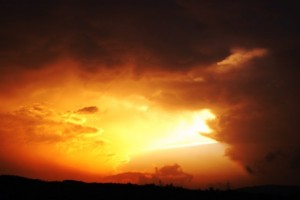Every weather pattern has a name. And used to have a timeframe as well.
The recent rains – which we all very clinically called ‘pre monsoon showers’ – used to be ‘mango showers’ earlier, helping in the ripening of mangoes. An outcome of thunderstorms over the Bay of Bengal, they fell in April and were also called ‘April showers’. Very crucial for the farmers of Kerala, Karnataka and Goa with large mango plantations, these showers prevented the mangoes from falling prematurely. However this year ‘mango showers’ have arrived as we almost bid adieu to the mango season.
Indian monsoons, forget predict, have been historically difficult to understand even. Its vagaries have astounded many able weathermen and washed away many theories. It is one of the most anticipated weather phenomena of the subcontinent due to its economic and environmental impact. And of course the many political ramifications as well; not surprisingly, in some parts of the country the monsoon is referred to as, with playful reverence, ‘the real finance minister’. This ‘real finance minister’ starts calling the shots beginning June when the Thar Desert and the adjoining areas of north and central India gets heated up considerably creating low pressure pockets. Rushing in to fill this void is the moisture-heavy wind from the Indian Ocean. The Himalayas prevent these from crossing over into Central Asia and as a result, the water-laden clouds rise on the subcontinent side leading to a temperature drop and precipitation. Then, it is not as easy as it sounds.The geographical features of the subcontinent, along with myriad atmospheric, oceanic and geophysical factors play a crucial role in determining it; El Nino which we are all too familiar of by now, is just one.
Weather anomalies have become a new global phenomenon. Concepts like ‘climate change’ and ‘global warming’ have attained near-pop status; ‘global dimming’ is cult. ‘Research has shown that air pollutants from fossil fuel use make clouds reflect more of the sun’s rays back into space. This leads to an effect known as global dimming whereby less heat and energy reaches the earth. At first, it sounds like an ironic saviour to climate change problems. However, it is believed that global dimming caused the droughts in Ethiopia in the 1970s and 80s where millions died, because the northern hemisphere oceans were not warm enough to allow rain formation. Global dimming is also hiding the true power of global warming.’ From a paper on the subject on Globalissues.org
Dr Ball’s paper was published in June this year which makes the ‘record levels’ of ice on the Bering Sea in May. Then, it seems everywhere else, to quote the data released by US National Climatic Data Centre (NCDC) the average temperature for the month was the second hottest ever since 1880 – the year records were first compiled – with 2010 witnessing the worst May. Large swathes of the western Himalayan region in Uttarakhand was ravaged by forest fires and in the US more than eight lakh hectares of forest have been burned to clumps. The period from March to May have been reported as the ‘hottest ever’ with ‘humans tossing and turning in a sweaty bath like slick hotdogs’ as one local newspaper reported.
Then, for every hotdog out there, there is a wet cat. In Britain, the ‘worst ever summer’ means that the cold and wet monsoon has ruined many eagerly-awaited family vacations. Since weather recording began, this June was the wettest and July and August are slated to follow suit. Delayed play at the Wimbledon, cancelled race meetings at the British Grand Prix, called off musical performances…the monsoon continues to take its toll in the United Kingdom. With the Met department predicting the ‘worst summer’ to continue its washout spell well into August, it remains to be seen what impact it will have on the sporting extravaganza Olympics.Meanwhile in Delhi the ‘mango showers’ lasted barely a couple of days. One reason could be that the mangoes were not on the trees but on display at the Dilli Haat.














